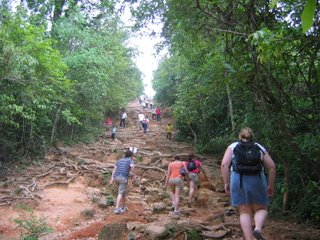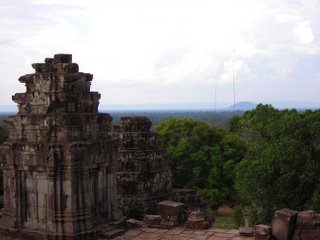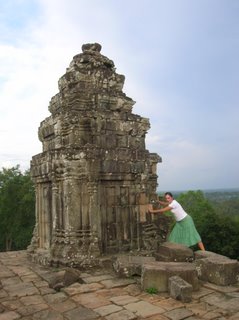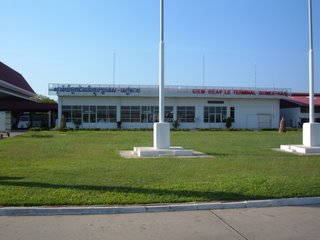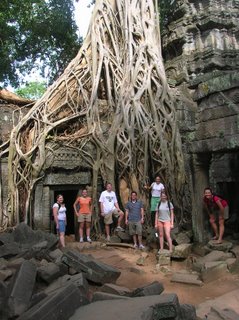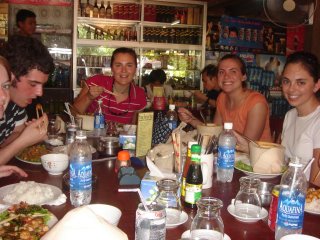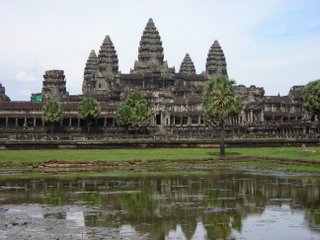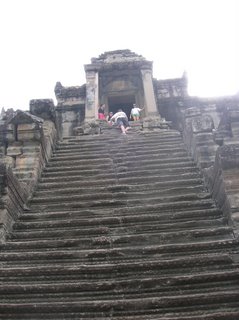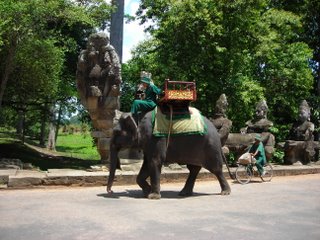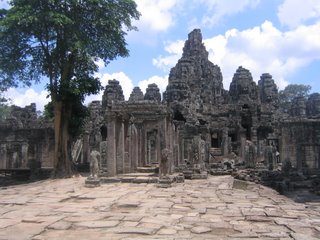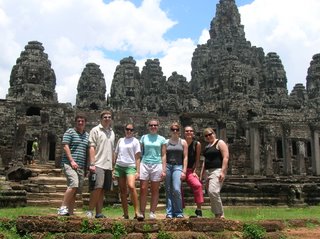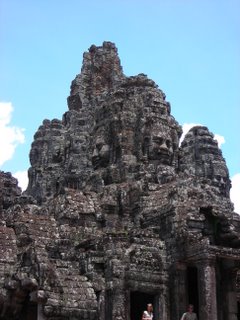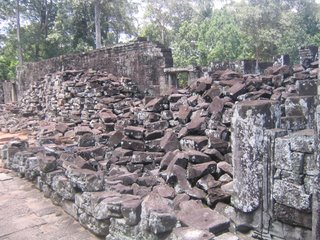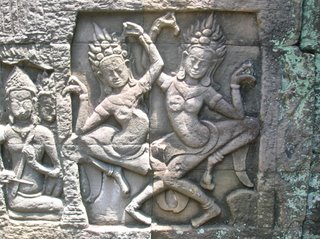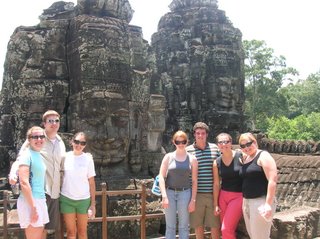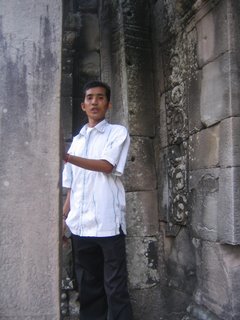I have successfully arrived in Beijing, China. I will be studying here at Tsinghua University (the top engineering school in China) until August 2nd. All of China is in the same time zone as Singapore, so none of us have to deal with any jetlag. We arrived on Friday evening after a day of traveling, and classes begin today.
Living in Beijing is like nothing else. Everywhere we have been so far, while English may not have been the primary language, we have at least been able to get by without knowing the local language. That’s not possible in China. Everything is in Chinese, and pretty much no one (except the highly educated) speaks English. The worst part is that everything is written in Chinese characters. When you travel to a country like Germany or France, you may not understand the language, but it is close enough to English that you can usually figure it out. You can’t do that with Chinese characters. You either know them or you don’t; there is no guessing. Also, when you learn French or German phrases (‘Is that chicken / pork / beef? Where is the toilet?’), it is fairly easy to remember them as they use our same alphabet and sounds. Learning Chinese phrases is very difficult. First, they use different sounds than European-based languages. Second, Chinese is a tonal language, a concept that we don’t have in English. Each syllable can be pronounced with one of four tones: first (flat), second (up), third (up and down), and fourth (down). A syllable can mean four different things with each of the tones. For example, ‘ma’ under each of the four tones means mother, hemp, horse, and to abuse or scold respectively. Also, when you add it to the end of a sentence, it turns the sentence into a question. This is hard for us because we can’t hear the tones very easily or speak them correctly, leading to some real confusion!
The lack of language skills is an especial hindrance when we’re trying to eat. Because the menus are in Chinese characters, we won’t know what is actually being served. We have to ask for noodles and a meat and vegetables and hope that’s what we get. It’s a little easier in a fast food chain where we have a good idea of what they serve, but it is harder in some of the student cafeterias where you can’t see what they serve. You never quite know what you’re going to get. Also, I am lactose intolerant, which means I have to find some way of asking for no milk or cheese. Last night we ate at Qing Qing, a fake McDonalds, and I have learned how to ask for no white sauce on my chicken sandwiches, so I asked for it without white sauce. However, then the lady asked me if I wanted the lettuce also (which I didn’t understand) and then tried to communicate the fact that she didn’t think she could give me a sandwich with no white sauce as they were pre-made (which I didn’t understand). I could kind of figure this out from hand gestures, but I would have been lost without Carlanna (who spent last summer in Shanghai and has had two semesters of Chinese language). She managed to convey that if I had the white sauce, it would make my stomach ‘not good’ and so the lady made a special sandwich. So, even when you know what to ask for, the lack of language skills makes continuing the conversation very tricky. Also, when I want to buy crackers or cereal or something from the store, the ingredients are all in Chinese characters, so I can never really tell if they include milk or not. I know the character for milk, but there are so many things that I can’t have (condensed milk, buttermilk, milk powder, etc) that I can’t learn all of the combinations in five weeks. Wish me luck!
Aside from the language, the next hardest thing for us to deal with is the environment. Beijing must be the most polluted city on earth. It is so polluted that is seems that the city is continually under a thick cloud of fog, except that oftentimes the fog is yellow. And it’s smog. You can’t see the sky during the day. You get a few hours of relatively clear weather in the morning, but by mid-afternoon it’s getting heavier and by dinnertime you don’t want to be outside at all. It has been raining every evening here, so the nights are a bit clearer, but it’s still really hard on our respiratory systems. We are all having coughing fits. Also, when you’re not breathing in smog, you’re breathing in dust. China industrialized very quickly and left its environment behind. Consequently, there are no trees to hold down the dust and sand in the desert, and it’s encroaching on Beijing rapidly. Dust storms are worst in April, and I read somewhere that in the worst one dust reached Taiwan! Whenever we come in from being out all day, we have to scrape the dust off of our skin. It’s very, very dirty.
Tsinghua University is an incredibly large campus, so we all had to buy bicycles to get around. Imagine all of us Americans, most of us who haven’t been on bikes in a long time, trying to bike around the streets of Beijing! We have only been on the streets about twice now, and no one has been hit, but we’ve had a couple of close calls. China drives on the right side of the road, like America, so that does make it a bit easier to ride around. During the day, however, there are so many people on bikes around campus that they are the hardest to avoid. We joked today (the first weekday we’ve been riding on campus) that it was like being in a really large, really unorganized bicycle race. It’s a lot of fun, though. We’re getting better at maneuvering through the crowds, so perhaps we’ll be professionals at the end of the summer. I had forgotten how much fun it is to ride bikes. Too bad there’re too many hills at Georgia Tech, not enough bike paths to get to classes, and no way could I ride a bike on the Atlanta streets.
Aside from class, tours around campus, and buying bikes, the only other thing we have done in Beijing is visit Yuanming Yuan, the Old Summer Palace. It was built during the 12th century but destroyed by the British and French troops during the Second Opium War. A lot of the treasures and pieces of the palace keep showing up even today in auction houses.
Next Friday we have a city tour planned, and we may head to the Great Wall on Saturday. It’s all up in the air now!
 My lovely dorm room. Don't be fooled by the appearance of the bed; it's actually rock hard. It's a wooden plank with a sheet and a comforter. The only thing I have slept on that is harder is the concrete floors in Alaskan churches. There is a decent sized TV in the lower left hand corner just out of sight. My bathroom (see below) is basically right behind my bed; the door is across from the sink in the entrance.
My lovely dorm room. Don't be fooled by the appearance of the bed; it's actually rock hard. It's a wooden plank with a sheet and a comforter. The only thing I have slept on that is harder is the concrete floors in Alaskan churches. There is a decent sized TV in the lower left hand corner just out of sight. My bathroom (see below) is basically right behind my bed; the door is across from the sink in the entrance. This is my bathroom. It's not as good as at NUS because the shower is pretty much part of the toilet and there is a sink and mirror in the shower, but it's still a private bathroom, so I am not complaining. We also have a real toilet, thankfully (see below).
This is my bathroom. It's not as good as at NUS because the shower is pretty much part of the toilet and there is a sink and mirror in the shower, but it's still a private bathroom, so I am not complaining. We also have a real toilet, thankfully (see below). We have real toilets in our dorms, but every other toilet in China looks like this. I took this picture at NUS, so imagine it dirtier and without the nice trash can and toilet paper. Fun.
We have real toilets in our dorms, but every other toilet in China looks like this. I took this picture at NUS, so imagine it dirtier and without the nice trash can and toilet paper. Fun. The dark blue bike with the dark yellow lock is mine. I really like it, especially the bell. Cross your fingers that it doesn't break or get stolen any time soon!
The dark blue bike with the dark yellow lock is mine. I really like it, especially the bell. Cross your fingers that it doesn't break or get stolen any time soon! This is our hotpot dinner. You can see how we're using our chopsticks to drop in the raw beef (and have plates of raw meat surrounding us). We used the same chopsticks to eat, so we dipped them in the boiling water to sanitize them. So good!
This is our hotpot dinner. You can see how we're using our chopsticks to drop in the raw beef (and have plates of raw meat surrounding us). We used the same chopsticks to eat, so we dipped them in the boiling water to sanitize them. So good! This is the ruins of the main palace at Yuanming Yuan. It used to be a grand palace, the main residence and entertaining hall. It took a lot of manpower to destroy it so completely!
This is the ruins of the main palace at Yuanming Yuan. It used to be a grand palace, the main residence and entertaining hall. It took a lot of manpower to destroy it so completely! One part of Yuanming Yuan that has been restored is the maze. We all found our way through the maze to the middle, but not without a wrong turn or two!
One part of Yuanming Yuan that has been restored is the maze. We all found our way through the maze to the middle, but not without a wrong turn or two!
